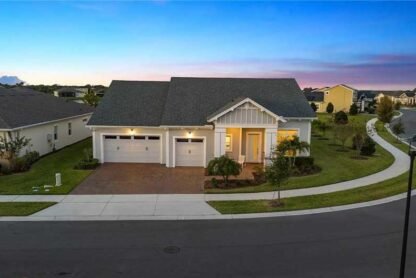The United Kingdom, renowned for its rich history and diverse architectural heritage, has become a hotspot for renovation projects in recent years. The interior designer salary in the UK is a testament to the growing demand for professionals in the field. As the country continues embracing modernity and tradition, the need for skilled interior designers to transform spaces and revitalize structures has surged.
In the UK, interior designers are pivotal in breathing new life into old buildings, reimagining interiors, and shaping the visual narratives of homes and commercial spaces. The demand for their expertise is driven by a combination of factors, including a thriving real estate market, a burgeoning hospitality industry, and a renewed appreciation for well-designed living spaces.
This article will look into the essential steps of site evaluation and master planning for renovation projects in the UK, shedding light on the factors that shape successful transformations. Moreover, it will explore the role of interior designers in these projects and how their contributions impact the aesthetics, functionality, and market value of the properties they work on.
Understanding the Importance of Site Evaluation
Location and Surroundings:
Evaluating a site’s location and surroundings is more than just its physical coordinates. It’s about understanding the ecosystem in which the site exists. Proximity to schools ensures families with children will find it appealing. Access to shopping centers provides convenience for residents, while nearby public transportation hubs increase the site’s accessibility. Green spaces offer aesthetic value and contribute to the overall quality of life. In essence, evaluating the location and surroundings helps gauge how well the site fits into its urban or rural context.
Site Accessibility:
Evaluating site accessibility goes beyond confirming if there’s a road leading to it. It’s about assessing the quality of that road, its capacity, and whether it can accommodate the traffic the renovation project will generate. Additionally, it involves considering any legal or regulatory restrictions that may hinder or enhance access. Ensuring smooth access is about convenience and minimizing disruptions during construction.
Environmental Considerations:
Delving deeper into environmental considerations, this encompasses thoroughly analyzing the soil composition, drainage patterns, and potential contamination issues. Soil quality can dictate the foundation type required for a building, affecting construction costs. Proper drainage planning is essential to prevent flooding issues in the future. Environmental contamination can be a legal and ethical minefield if not addressed adequately. Compliance with environmental regulations ensures the sustainability and long-term viability of the project.
Master Planning for Renovation
Defining Project Objectives:
Defining project objectives isn’t merely about stating broad goals. It involves dissecting those goals into specific, measurable, achievable, relevant, and time-bound (SMART) objectives. For instance, if the goal is to preserve a historic building’s character, the objectives may include retaining original architectural elements, restoring historical features, and complying with heritage preservation guidelines. These objectives set the standard for the entire project.
Architectural Design:
Architectural design is where the project’s vision takes form. It’s about crafting not just physical spaces but also emotional experiences. Collaborating with architects and designers involves experts who can translate ideas into tangible plans. Designing the layout isn’t just about functionality; it’s about optimizing flow, maximizing natural light, and creating aesthetically pleasing spaces. The façade’s design is crucial for the site’s curb appeal, while interior design directly impacts the user experience. Landscaping should be more than just greenery; it should complement the architecture and contribute to a harmonious environment.
Budgeting and Timeline:
Budgeting isn’t merely a matter of listing expenses; it’s about meticulous financial planning. It means accounting for every foreseeable cost and even creating contingencies for unforeseen ones. The timeline isn’t just a schedule; it’s a dynamic tool that tracks progress, identifies bottlenecks, and facilitates decision-making. It’s about ensuring that every step aligns with the project’s objectives and that deviations are addressed promptly.
Continuous Learning and Adaptation:
The realm of architecture and construction is ever-evolving. Staying flexible and adaptable means reacting to unexpected challenges and proactively seeking improvements and innovations. Reputable online design courses can provide a structured way to acquire new knowledge and skills. These courses aren’t just about theoretical learning; they often provide practical insights and case studies directly applicable to real-world projects. Continuous learning ensures that your renovation projects benefit from industry trends and best practices.
Conclusion
In conclusion, the interior designer’s salary in the UK reflects the country’s dynamic construction and renovation landscape. The United Kingdom’s blend of historic and contemporary architecture presents a unique canvas for interior designers to leave their creative mark. The demand for these professionals continues to soar as property owners and investors recognize the value they bring to renovation projects.
From the meticulous site evaluation that sets the stage for a renovation’s success to the masterful planning that ensures objectives are met, the role of interior designers cannot be understated. Their designs breathe fresh life into old structures, making them more appealing, functional, and in sync with modern living standards.
As the UK’s real estate market evolves and the need for sustainable, aesthetically pleasing spaces persists, interior designers remain at the forefront of innovation. Their ability to fuse creativity with practicality not only elevates the quality of living but also adds significant value to properties. In this thriving industry, the interior designer salary UK offers is not just a reward but a recognition of their pivotal role in shaping the country’s architectural future.









